If you’re looking for a healthy and tasty alternative to industrial bouillon cubes, this homemade vegetable granule for broth recipe is perfect for you! With fresh and natural ingredients like mixed vegetables, coarse salt, and extra virgin olive oil, you can create a concentrate that flavors every dish. Simple to prepare with the help of a food processor, and easily dried with the oven or microwave. Discover step by step how to make your vegetable granules and say goodbye to preservatives!
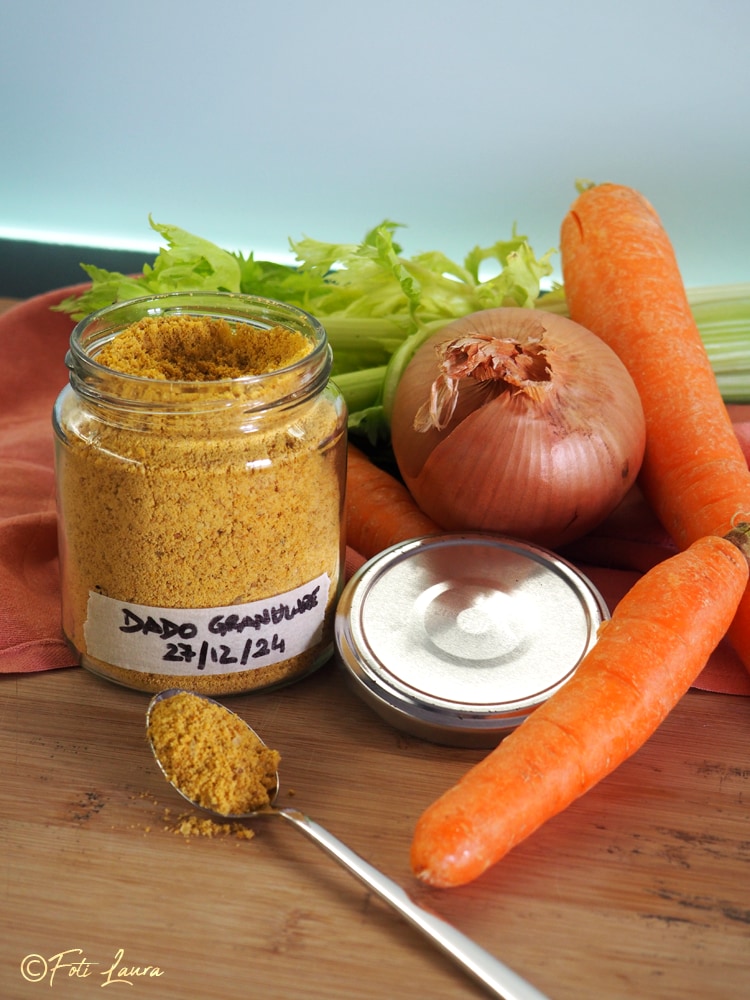
- Difficulty: Easy
- Cost: Very inexpensive
- Preparation time: 10 Minutes
- Cooking methods: Cooking with food processor, Microwave
- Cuisine: Italian
- Seasonality: All seasons
Ingredients
- 14 oz mixed vegetables (usually celery, carrot, and onion)
- 4.58 oz coarse salt
- 1.41 oz extra virgin olive oil
- 1 tsp tomato paste
Tools
- 1 Food Processor Monsieur Cousine Connect
Steps
Place the chopped vegetables into the bowl of the Monsieur Cuisine Smart or a food chopper and chop for 10 seconds | speed 7.
Gather the mixture at the bottom.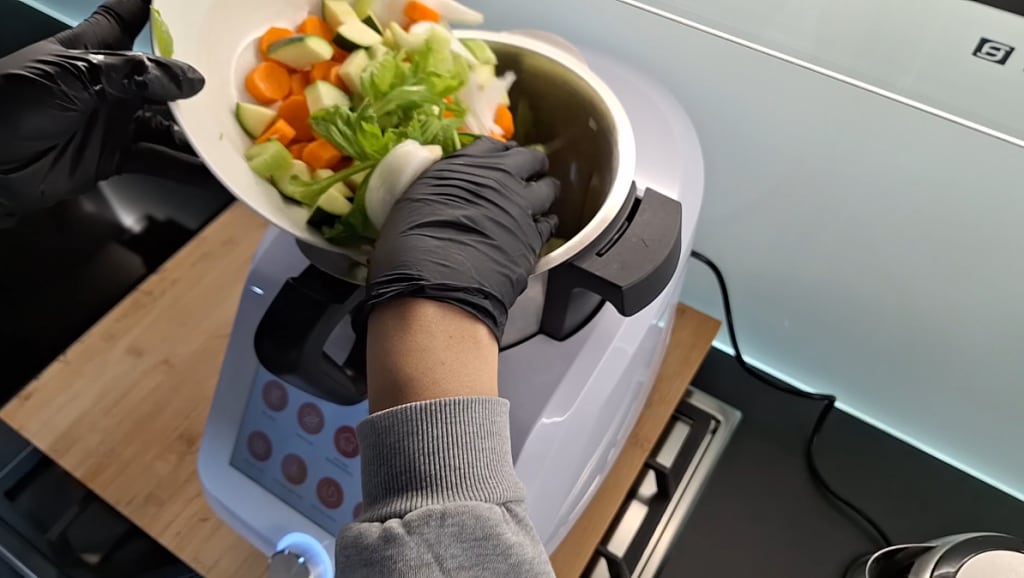
Add the salt, oil, and tomato paste.
Set the steaming function to speed 2 for 20 minutes, with the measuring cup half open (to avoid splashes, you can place a strainer under the lid).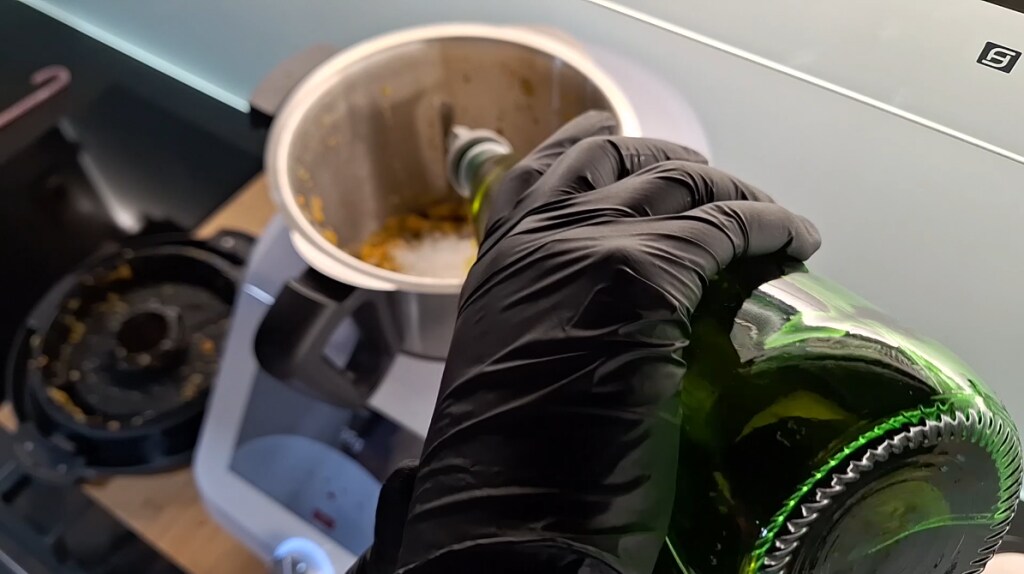
After cooking, chop everything for 1 minute at speed 10, gathering the mixture at the bottom.
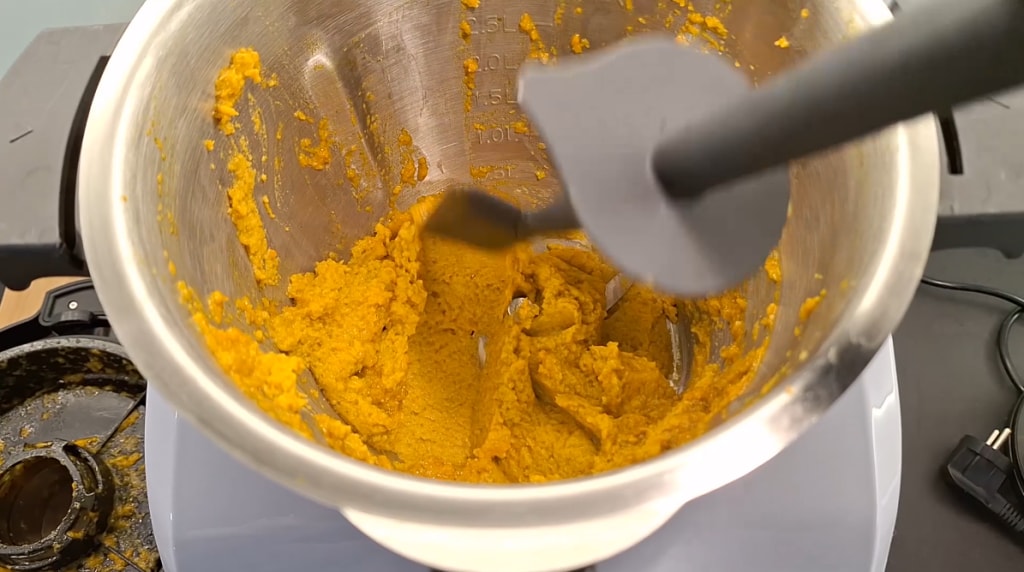
With a pan: If you used a pan for manual processing, put the mixture in the same pan and let the water evaporate, stirring and spreading it until it dries. This step requires some manual skill.
With an oven: For even drying, you can use a fan oven at 300°F. Spread the mixture on a baking sheet lined with parchment paper and stir occasionally until completely dry.
With a microwave: Spread the mixture on a sheet of parchment paper and cook at 800W for 3 minutes, turning and spreading frequently until completely dry.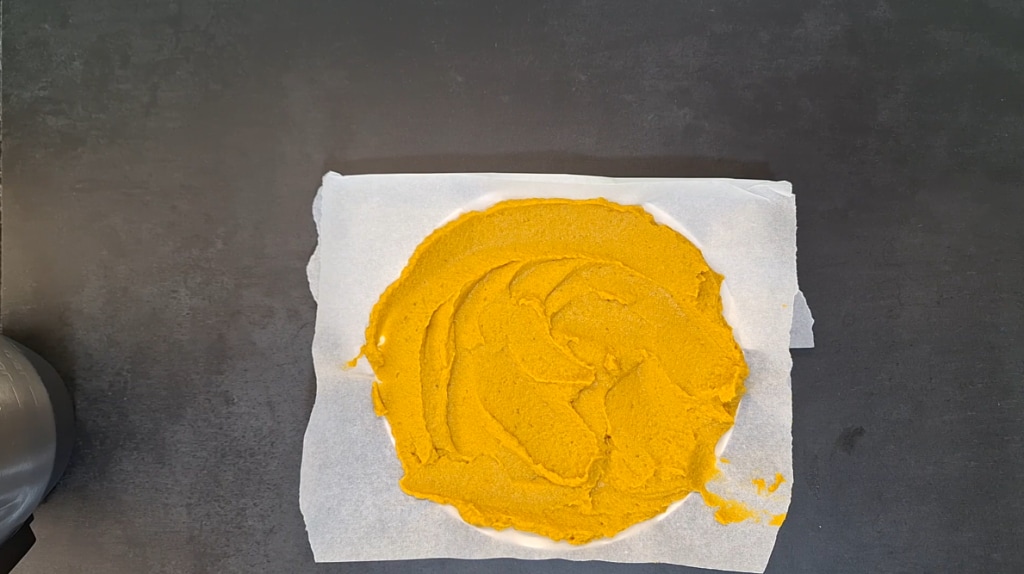
Once dried, let the mixture cool completely.
Place the mixture in the clean and dry bowl of the Monsieur Cuisine Smart, close the lid, and press the center button to start a 1-second turbo round.
If the bowl is occupied, you can use another accessory to chop.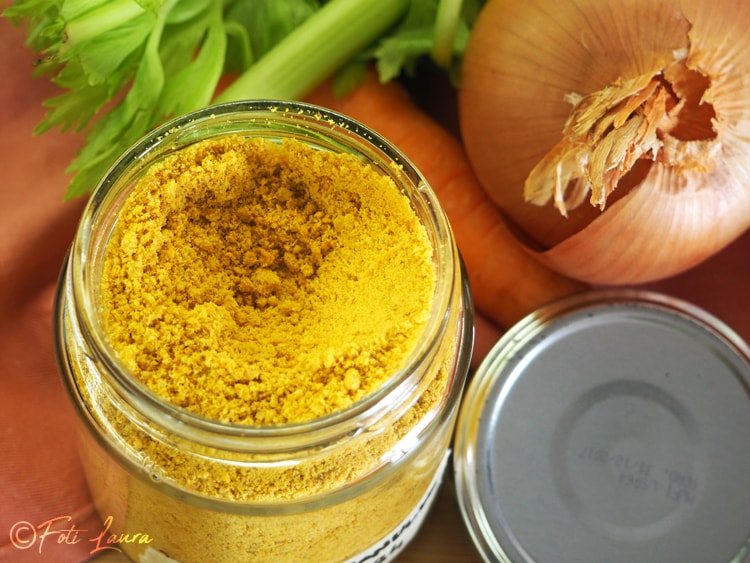
Pour the chopped vegetable granules into a dry, clean jar. Store in the pantry for future use.
A perfect homemade vegetable granule, ready to flavor broths, soups, or other dishes!
Homemade vegetable granules are a practical, healthy, and delicious solution for those who want to avoid the preservatives of industrial bouillon cubes. Try it in your kitchen to enrich every dish with a natural and genuine flavor.
Storage, Tips, and Notes
Storage: Once prepared and chopped, store the vegetable granules in a well-sealed, dry, and clean jar. Keep it in the pantry, away from direct light and humidity, to maintain its flavor and properties for a long period. Homemade vegetable granules can last up to 6 months if stored correctly.
Dosage: Use vegetable granules as a substitute for bouillon cubes or powdered broth. A small amount is enough to flavor broths, soups, risottos, or any dish that requires a touch of vegetable flavor. Start with a teaspoon per serving and add more according to your taste.
Variations: You can customize your vegetable granules by adding other vegetables to your liking, such as zucchini, leeks, peppers, or fennel. For an aromatic touch, try adding dried herbs like rosemary, thyme, or bay leaves.
Drying: If you prefer a faster method, the microwave is a good choice for drying. However, the oven offers a more even result and can be used to dry large quantities at once.
Use in recipes: Vegetable granules can also be used to flavor dishes like sauces, stews, and marinades. They can be dissolved directly in hot water or added to ingredients during cooking.
Food safety: Make sure the container in which you store the granules is perfectly dry to prevent moisture from compromising the quality of the product.
Vegetable granules without tomato: If you prefer a more neutral granule, you can omit the tomato paste. This will allow you to obtain a vegetable preparation that suits a wider range of dishes, even the more delicate ones.
Addition of dried mushrooms: An interesting addition for those who love a richer, earthier flavor is that of chopped dried mushrooms. Add them along with the vegetables for an even deeper taste.
FAQ – Vegetable Granules for Broth
Can I use vegetable granules in all recipes?
Yes, vegetable granules are perfect for flavoring a wide range of dishes, including broths, soups, risottos, sauces, stews, and marinades. They are a great substitute for industrial bouillon cubes.
Can I use other vegetables instead of celery, carrot, and onion?
Absolutely! You can customize your granules by adding vegetables of your choice, like zucchini, peppers, leeks, or fennel. Each combination will give you a unique flavor.
How long do homemade vegetable granules last?
If stored correctly in a sealed jar, away from humidity and direct light, vegetable granules can last up to 6 months.
Can I make granules without tomato paste?
Yes, if you prefer a more neutral preparation, you can omit the tomato paste. The result will be a versatile granule that suits a greater variety of dishes.
How can I adjust the flavor of the granules?
Start with a teaspoon of granules per serving and taste the dish. You can add more granules for a stronger flavor, according to your preferences.
What is the best method to dry the granules?
The microwave is the fastest method, but the oven offers more even drying, ideal for large quantities. Choose the method that best suits your time and needs.
Can I add herbs to the vegetable granules?
Yes, adding dried herbs like rosemary, thyme, or bay leaves can enhance the flavor of your granules, making them even more aromatic and suitable for different dishes.
Can I use granules for vegan or gluten-free dishes?
Yes, vegetable granules are completely vegan and gluten-free, so they can be used in any plant-based or gluten-free diet.

